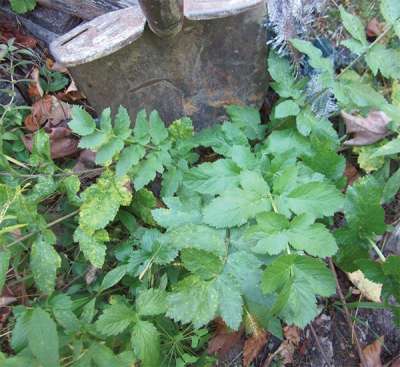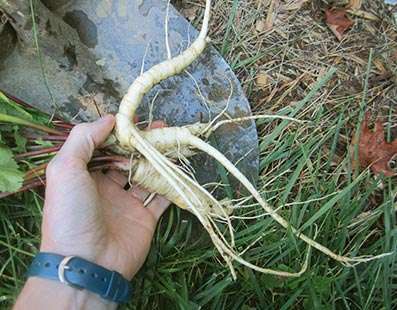Yes, foraging can be risky. But most people approach wild foods with unnecessary caution. Foragers are often the subject of anxious looks even when nibbling wild plants that are no more dangerous or difficult to identify than a garden tomato. Just how cautious one should be when foraging is a question that each forager must answer for him or herself. But there are sensible guidelines for reducing the risk of your wild food adventures.
There are few better cases to illustrate this than the wild parsnip (Pastinaca sativa). Parsnips are members of the carrot family, Apiaceae, which contains some of the most toxic plants in the world. One member, water-hemlock (Cicuta maculata), is so poisonous that a single bite may be lethal. Before gathering wild parsnips, a forager should be able to identify water-hemlock and other similar-looking poisonous plants at a glance. This is not as daunting a task as it may sound. In our region, the list of dangerously toxic plants is a short one, but it is a list that all conscientious foragers must commit to memory. Knowing these plants also helps new foragers prioritize. Beginners can steer away from the carrot family toward species that are easily identified and where the stakes of faulty identification are much lower.
The next step is to spend time with comprehensive field guides. There is no way around it: if you want to pursue an interest in wild foods, you must also cultivate a familiarity with wild plants in general. When I first encountered the parsnip, I cross-checked several guides until I was certain of my identification. The guide also reminded me to handle the plant carefully, as the sap from parsnip stems and leaves contain a toxin that can cause a nasty burn.
Field guides assume that the plant you are identifying is in flower, as this is the stage of a plant’s life when it can be identified most reliably. But parsnips in flower are not good to eat, having long since drawn the sugars and nutrients from their roots. What’s a forager to do? Wait. Watch. Get to know the plant through its whole life cycle. Parsnips are biennials: they spend their first year storing energy in their big taproot and only flower in their second year, using the stored energy to outgrow competing annuals. So in the fall I note the location of first-year parsnips. Then I seek out their star-like, green rosettes in the spring.
Once harvested, prepare only a small amount of any new plant for your first taste. If it tastes unpleasant, do not eat it. Unpleasant flavors warn of toxins. Even if it tastes good, consume in moderation at first. In the case of wild parsnips, I find this last bit of advice to be the most difficult to follow – their sweet, spicy flavor makes them difficult to stop eating.
Isn’t this a lot of work for a taste of wildness? At first, yes. But once wild parsnips become familiar, you will gather them with the same confidence you have when harvesting carrots from a garden. The only difference is that the wild ones are free for the taking. And for those who are nervous about wild foods, it is good to remember that all food carries risk. Even the most benign-looking garden strawberries will make you sick if eaten flavors, in sufficient quantity. For those willing to explore the wild for new foraging for plants like the wild parsnip can provide both an education and an adventure.
Recipe: Fried Parsnips
Peel parsnips and cut into matchsticks.
Boil for 30-45 minutes until a fork goes through easily but they are still firm.
Drain and fry in oil or butter until browned.
Season with salt.





Discussion *